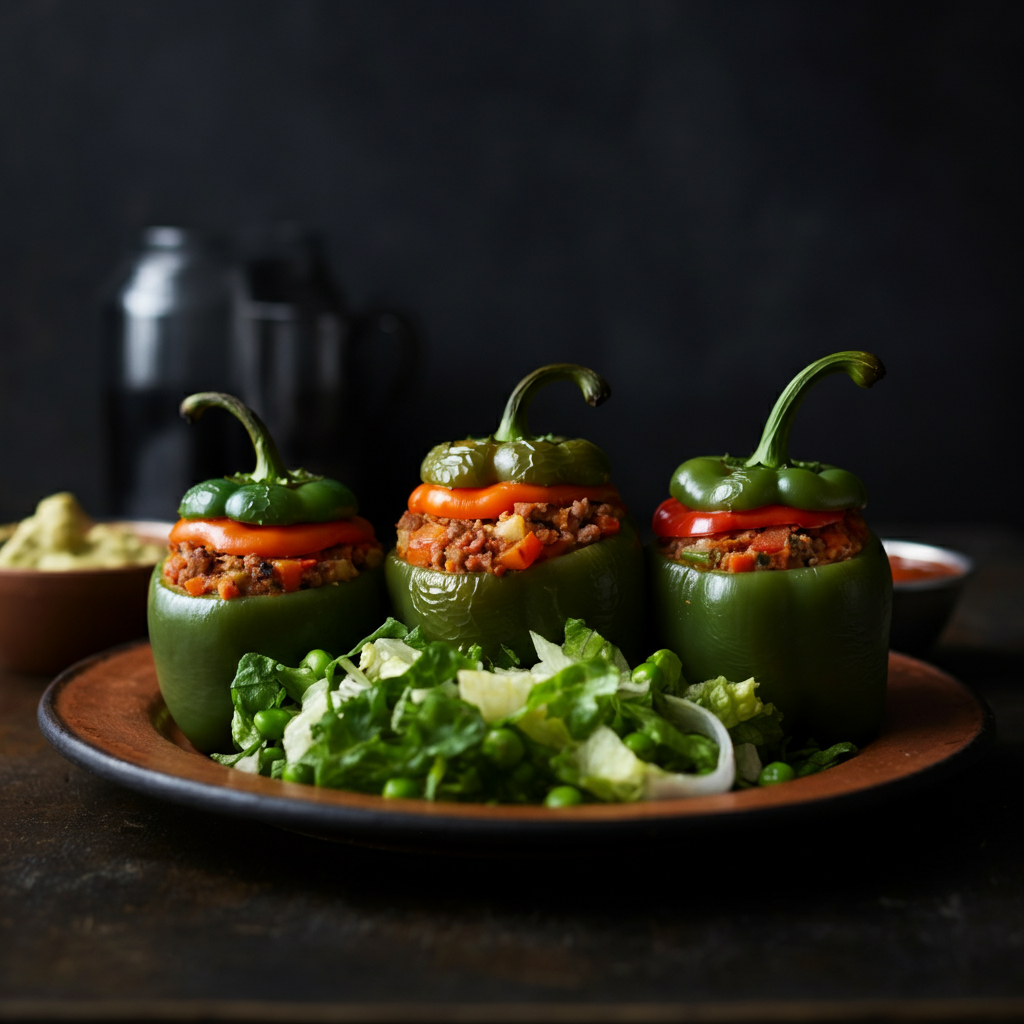Rocoto Relleno
Peru
Stuffed rocoto peppers with minced meat, vegetables, and cheese.

Origins and History
Rocoto relleno, meaning "stuffed rocoto pepper," boasts a history deeply rooted in Peruvian cuisine. The rocoto pepper itself, a pungent and flavorful variety native to the Andes, has been a staple in Peruvian diets for centuries. While the exact origins of the stuffed rocoto pepper dish are difficult to pinpoint precisely, its popularity suggests a long and evolving culinary tradition. Early versions likely involved simpler fillings and techniques, reflecting the available ingredients and cooking methods of the time. The dish's evolution probably involved a gradual incorporation of diverse influences, mirroring the rich history of Peruvian gastronomy which blends indigenous, Spanish, and other cultural elements.
Cultural Significance
Rocoto relleno holds significant cultural importance in Peru, often featuring prominently in festive gatherings and family meals. It represents a fusion of flavors and techniques reflecting the country's diverse culinary heritage. The dish's popularity extends across different regions, though variations in preparation exist. Sharing a plate of rocoto relleno signifies communal sharing and celebration, reinforcing its role in Peruvian social and cultural life. Its presence in traditional celebrations and family gatherings underscores its importance as a culinary symbol of Peruvian identity and cultural pride.
Traditional Preparation
Traditional preparation of rocoto relleno begins with selecting ripe, but firm rocoto peppers. These are carefully cleaned and seeded, often with the careful removal of the membranes and seeds which contain much of the pepper's heat. The peppers are then prepared for stuffing. The filling typically involves a savory mixture of minced beef or other meats, finely chopped onions, tomatoes, garlic, and spices such as cumin and aji panca (a milder Peruvian chili paste). After stuffing, the peppers are often simmered in a rich sauce, sometimes including potatoes and other vegetables. Finally, the dish is baked or fried, sometimes topped with cheese for added richness and flavor, resulting in a combination of sweet, spicy, and savory flavors that define Peruvian cooking.
Regional Variations
While rocoto relleno is enjoyed throughout Peru, regional variations exist. The type of meat used, the specific spices included, and the cooking methods employed can differ based on local traditions and available ingredients. Coastal regions might utilize more seafood in the filling, while Andean preparations may feature locally sourced meats and potatoes. The level of spiciness also varies; some regions prefer a milder dish, while others retain the rocoto's fiery heat. These subtle differences highlight the adaptability and versatility of the dish within the diverse Peruvian culinary landscape.
Modern Interpretations
Modern interpretations of rocoto relleno reflect innovative culinary trends. Chefs are experimenting with new flavor combinations and presentation styles. Vegetarian and vegan versions, featuring fillings of quinoa, lentils, or mushrooms, are gaining popularity, appealing to a broader range of dietary preferences. Fusion cuisine also plays a role, with influences from other culinary traditions being incorporated. While maintaining its core elements, rocoto relleno continues to evolve, adapting to modern tastes and culinary creativity while still honoring its traditional roots.